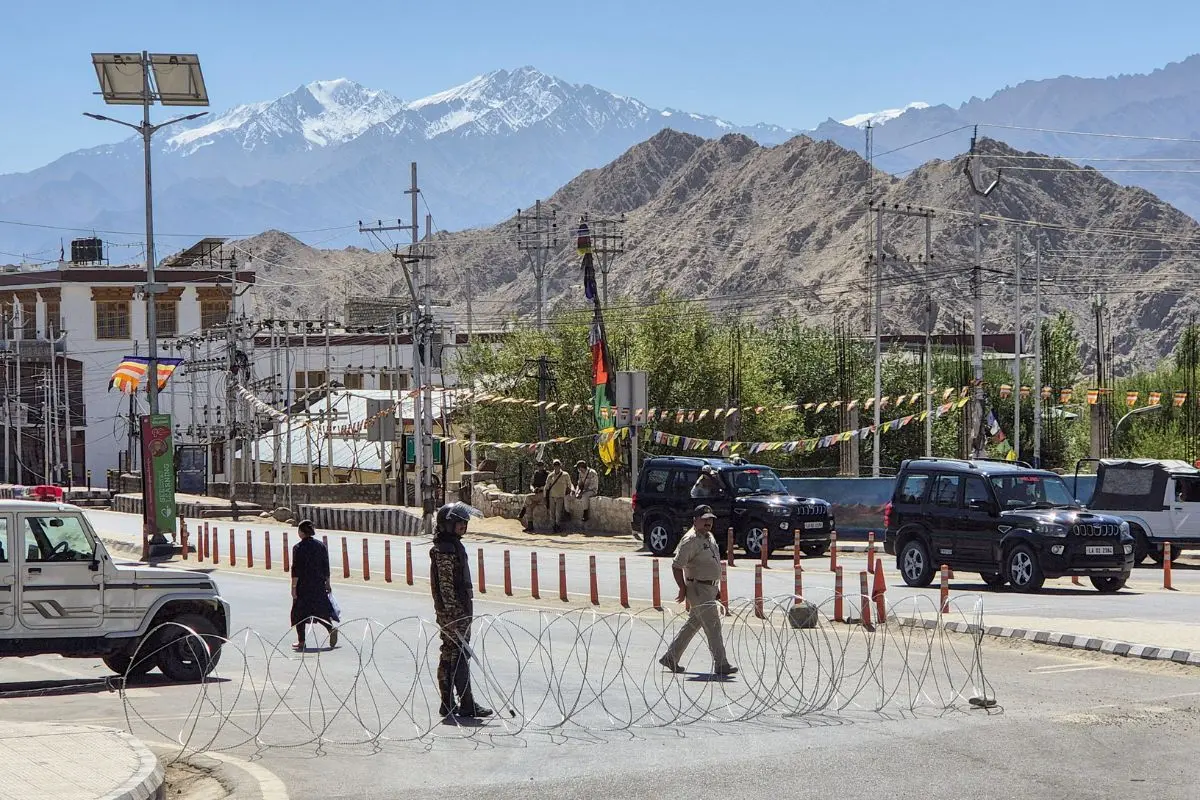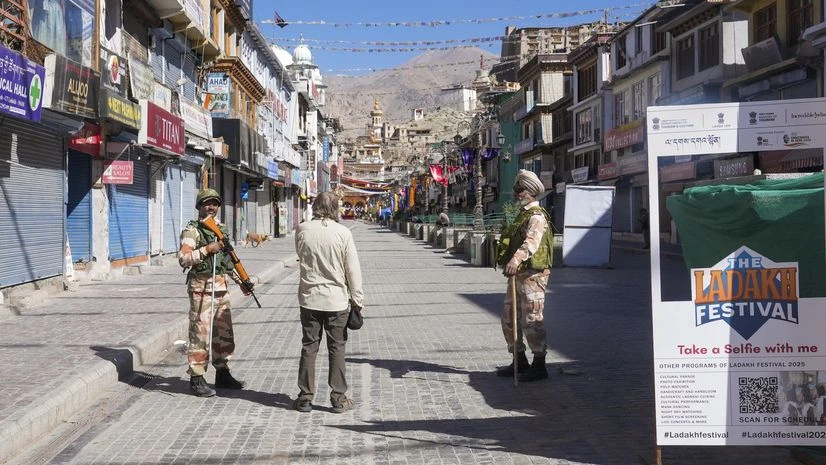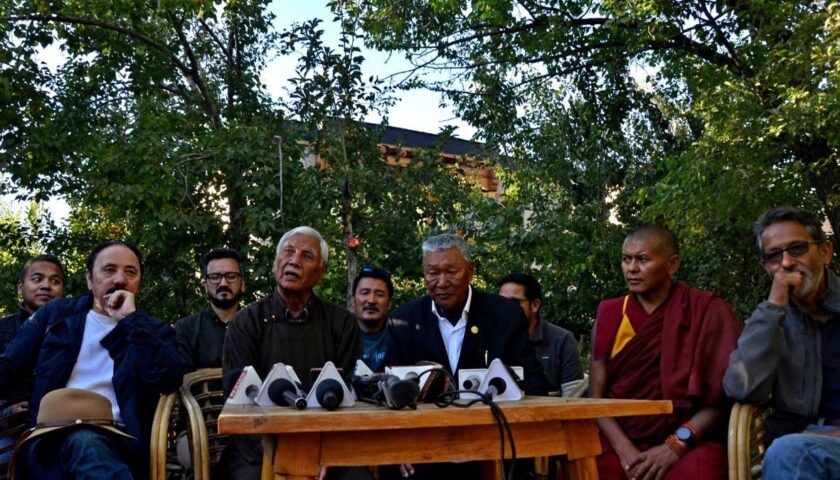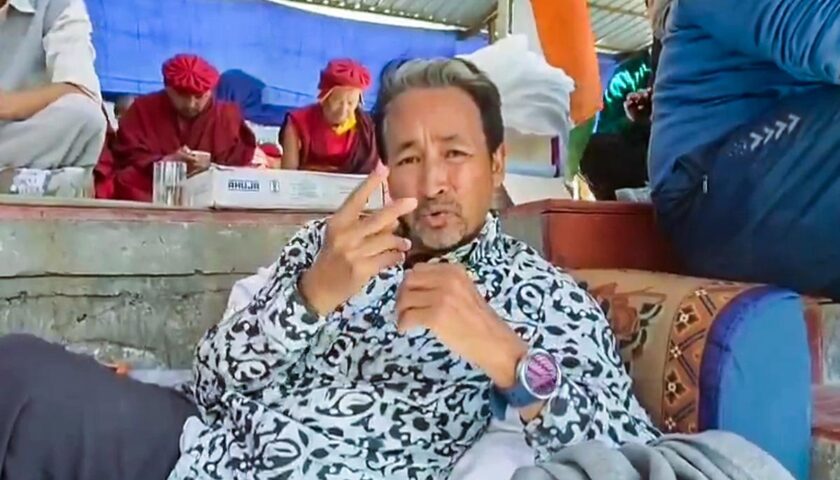Ladakh on the Edge: Leh Violence, Protests for Statehood, and the Fight for Dignity
By: Javid Amin | 02 October 2025
A Flashpoint in the Himalayas
Leh, October 2025 — Ladakh, India’s youngest Union Territory, is once again at the heart of political and social unrest. The September 24 police firing in Leh—which left four protesters dead, including Kargil war veteran Tsewang Tharchin—has triggered one of the most significant crises in Ladakh since its separation from Jammu & Kashmir in 2019.
The incident occurred during demonstrations demanding full statehood and constitutional safeguards under the Sixth Schedule, protections that many tribal leaders and civil society groups believe are crucial for safeguarding Ladakh’s fragile ecology, unique culture, and indigenous rights.
What followed was a wave of anger and distrust: the Ladakh administration ordered a magisterial probe, only to see it swiftly rejected by the Apex Body and the Kargil Democratic Alliance (KDA). Instead, protesters are calling for a judicial inquiry headed by a retired judge, citing concerns of bias in a government-appointed investigation.
To make matters more combustible, allegations of torture against detained activists—raised by Gitanjali J Angmo, wife of climate activist Sonam Wangchuk—have further inflamed public opinion.
The September 24 Violence
The Protest That Turned Deadly
The protests on September 24 were initially peaceful. Thousands gathered in Leh, chanting slogans for statehood and Sixth Schedule protection, rallying under the banners of the Leh Apex Body (LAB) and the Kargil Democratic Alliance (KDA).
Witnesses say the demonstrators, which included monks, students, and ex-servicemen, carried placards highlighting Ladakh’s marginalization since the abrogation of Article 370 in August 2019. What began as a sit-in escalated after security forces allegedly opened fire to disperse crowds near Leh’s Polo Ground.
The deaths of four protesters—among them decorated war veteran Tsewang Tharchin—shook Ladakh’s conscience. Images of his grieving family quickly went viral, symbolizing what many see as the government’s betrayal of Ladakh’s soldiers, who had long stood as the first line of defense on the Siachen Glacier and in the Kargil War.
The Magisterial Probe
The Administration’s Response
On October 2, 2025, the Ladakh administration announced a magisterial inquiry into the Leh violence. The District Magistrate of Leh appointed SDM Nubra Mukul Beniwal as the inquiry officer.
The probe invited citizens to submit oral or written testimonies, photographs, and video evidence between October 4 and 18. The final report is expected within four weeks.
The administration argued that the inquiry would be “comprehensive” and aimed at uncovering the “truth behind the firing and crowd control measures.”
Rejection by Apex Bodies
But the Apex Body was quick to reject it. Sajjad Kargili, a member of the Kargil Democratic Alliance and the Centre’s High-Powered Committee (HPC), declared that the probe lacked credibility.
Cherring Dorjay Lakrook, President of the Ladakh Buddhist Association and also part of the HPC, echoed the rejection, stating:
“A magisterial probe cannot ensure justice. What we need is a judicial inquiry headed by a retired judge, not a bureaucratic whitewash.”
For many in Ladakh, the rejection reflects a deeper distrust of the administration—seen by protesters as being too closely aligned with Delhi.
Allegations of Torture
The crisis deepened when Gitanjali J Angmo, wife of detained activist and environmentalist Sonam Wangchuk, accused Ladakh Police of torturing Wangchuk’s associates during interrogation.
She compared the methods to “colonial-era repression,” accusing the administration of criminalizing peaceful activism. “They are treating Ladakhi youth, who are asking for their constitutional rights, as if they are enemies of the state,” she said.
The allegations have galvanized support from civil society across India. Student unions, environmental groups, and veteran organizations have begun issuing statements of solidarity with the detained activists.
Broader Demands: Beyond Justice
The Leh Apex Body and KDA have reiterated their four core demands:
-
Immediate release of Sonam Wangchuk and all detained activists.
-
Compensation for families of the deceased and critically injured.
-
Full statehood for Ladakh, ensuring self-governance.
-
Constitutional safeguards under the Sixth Schedule to protect land, culture, and tribal rights.
Why the Sixth Schedule Matters
The Sixth Schedule of the Indian Constitution provides special protections for tribal areas in the Northeast, allowing autonomous councils to control land, resources, and cultural preservation.
For Ladakh—where over 90% of the population is tribal—this demand is central. Leaders argue that without such protection, Ladakh risks ecological exploitation, demographic shifts, and loss of cultural identity.
The demand has also united Leh and Kargil, two regions often divided by religion and politics. The Leh Apex Body (largely Buddhist) and KDA (largely Shia Muslim) have found common ground in the call for autonomy, an unprecedented show of solidarity.
Voices from the Ground
-
Tsering Namgyal, student activist (Leh):
“We are not against India. We are asking for what is guaranteed to other tribal areas. If Delhi thinks bullets can silence us, they are wrong.” -
Rigzin Spalbar, former CEC of Ladakh Autonomous Hill Development Council:
“This struggle is not just about politics. It’s about survival—our land, our water, our culture. Without safeguards, Ladakh will be sold to corporate interests.” -
Family of Tsewang Tharchin:
“He fought for India on the frontlines. He never thought he would be shot by Indian police in his own land.”
Historical Context
-
Pre-2019: Ladakh was part of Jammu & Kashmir, long demanding Union Territory status to escape Kashmiri domination.
-
2019 Abrogation: Article 370 was scrapped, and Ladakh was carved into a UT without a legislature. While Leh initially welcomed the move, Kargil opposed it.
-
2020–2024: Growing disillusionment in Leh as promises of protection and self-governance remained unfulfilled.
-
2025: Widespread protests erupt, uniting Leh and Kargil in an unprecedented front for statehood and Sixth Schedule.
The Road Ahead
The Leh violence has set the stage for a decisive confrontation between Delhi’s governance model and Ladakh’s aspiration for autonomy.
The government faces a dilemma:
-
Granting Sixth Schedule protections could limit Delhi’s direct control but might stabilize the region.
-
Refusing could deepen unrest, especially as civil society and veterans rally behind the protests.
With Assembly elections in J&K around the corner and Ladakh simmering, the Union Territory is emerging as a political flashpoint with national implications.
Conclusion
The deaths in Leh have transformed Ladakh’s simmering discontent into a defining struggle for dignity, rights, and recognition. What began as a protest for statehood has now become a litmus test for India’s democracy in the Himalayas.
At stake is not only the question of Ladakh’s future governance but also India’s ability to balance national security with democratic freedoms in one of its most strategic and sensitive frontiers.




